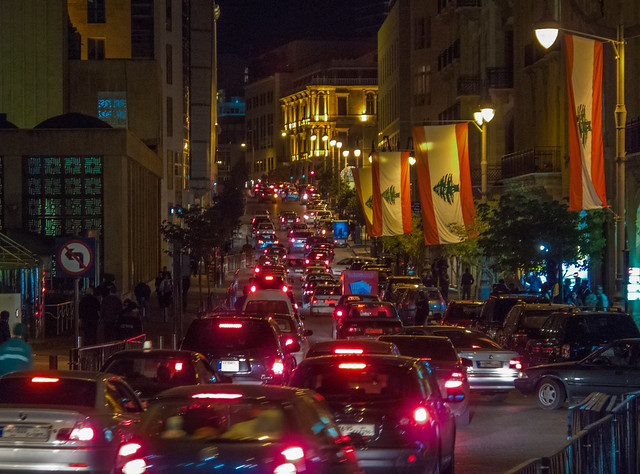By Mazen Omran, Johnny Ojeil, and Youssef Fawaz
The proposed Beirut Master Plan aims to put the city back on the international map as a hub for trade and investment, a place to work, and a destination for leisure. The execution of this plan has started with major construction works taking place in the Beirut Central District (BCD) and its planned natural extension on reclaimed land known as the New Waterfront District (NWD).
However, this proposed Master Plan may not achieve its main economic objectives due to the lack of transport infrastructure and multi-modal systems, i.e. transport is lagging behind. Congestion levels are currently unacceptable and will get worse in the future as a result of these development proposals. The key missing link is that Beirut is lagging on the sustainable public transport front and therefore it will not be able to economically compete in a strong manner with other cities in the region.
However, this proposed Master Plan may not achieve its main economic objectives due to the lack of transport infrastructure and multi-modal systems, i.e. transport is lagging behind. Congestion levels are currently unacceptable and will get worse in the future as a result of these development proposals. The key missing link is that Beirut is lagging on the sustainable public transport front and therefore it will not be able to economically compete in a strong manner with other cities in the region.
The work carried out in this paper demonstrates the economic benefit of a sustainable transport system. It compared a scenario with and without such system, and calculated loss time as a result of being held up in congestion during key peak hours mainly due to relying entirely on the private car. The work demonstrates that in addition to reducing congestion levels a sustainable transport system will generate benefits related to travel time, accident costs, vehicle operating costs, carbon emissions, environmental impacts, wellbeing of individuals, attraction of international companies to locate in Beirut with reduced congestions levels prevailing, positive effect on business efficiency, and wider labor catchment in terms of penetration of non-car owning communities thus improving labor mobility and accessibility.
Qualitative and quantitative analyses were carried out to determine the impacts of adopting a sustainable transport system on the economy. The results were alarming for the ‘Do Nothing Scenario’, i.e. remaining reliant on the private car as a sole means of transport. The analyses showed that without a road map adopting a sustainable transport system, Beirut will reach an economic standstill. Therefore, Beirut will have to develop a multi-modal transport system to become resilient and to be able to meet the economic growth that is being pursued by stakeholders and interested parties alike.
A broad but critical Action Plan was produced as part of the work that set the key functions required to move transport into a full multi-modal system that will give people a real choice to choose based on policy changes and traffic management initiatives including parking control.
Qualitative and quantitative analyses were carried out to determine the impacts of adopting a sustainable transport system on the economy. The results were alarming for the ‘Do Nothing Scenario’, i.e. remaining reliant on the private car as a sole means of transport. The analyses showed that without a road map adopting a sustainable transport system, Beirut will reach an economic standstill. Therefore, Beirut will have to develop a multi-modal transport system to become resilient and to be able to meet the economic growth that is being pursued by stakeholders and interested parties alike.
A broad but critical Action Plan was produced as part of the work that set the key functions required to move transport into a full multi-modal system that will give people a real choice to choose based on policy changes and traffic management initiatives including parking control.

More about the Middle East: